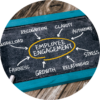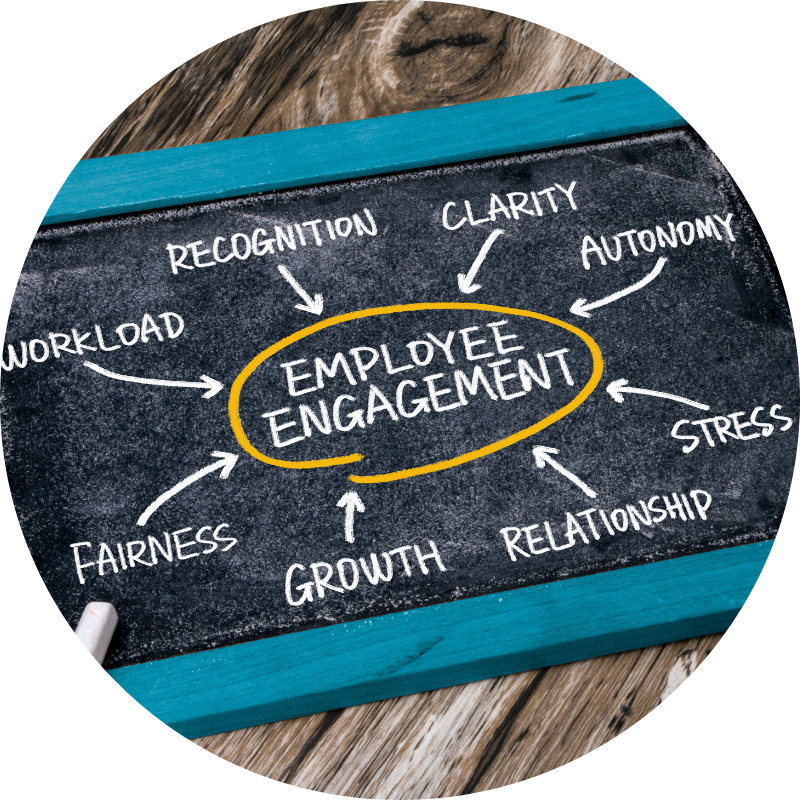 As a business owner and leader, it’s important to acknowledge that the organization’s success is attributed to quality employee engagement.
As a business owner and leader, it’s important to acknowledge that the organization’s success is attributed to quality employee engagement.
Employee engagement refers to the emotional commitment and level of involvement an employee has towards their work and the organization they work for. It goes well beyond basic job satisfaction. Strong employee engagement is a deeper connection and speaks to an unwavering commitment to an organization’s goals, values, mission and success.
Highly engaged employees are enthusiastic, motivated and passionate about their work. They have a sense of purpose and are fulfilled in their roles. These employees are willing to the go the extra mile and feel good about contributing to the organization’s profitability and sustainability. Engaged employees demonstrate high levels of productivity, creativity, and innovation.
An organization that prioritizes employee engagement benefits from improved employee performance and better business outcomes.
Leading and implementing employee engagement initiatives can take time, a total team commitment and making sure the employees are receiving the right tools to get engaged…and stay that way. Key elements of a strong employee engagement include:
Alignment – Is the right employee assigned to the right job? Job satisfaction is achieved when employees feel their work is meaningful, challenging, and in line with their skills and interests. A periodic assessment of the team is a solid practice to ensure alignment and high engagement.
Provide Continuous Feedback – Continuous feedback and straightforward communications are critical to strong employee engagement. Open lines of communication between managers and employees, and between employees and managers, where opinions are valued and heard support engagement. It is important that these lines are open in both directions. If the feedback is only from managers to employees, it is a missed opportunity to learn and address issues head-on.
Connection – Engaged employees feel a strong connection to the organization’s mission, vision, and core values. They understand how their individual contributions affect the company’s short and long term goals. Regular meetings, status updates (good and bad), management transparency, and clear communications on the objectives at hand support a strong company/management/employee connection.
Focus on Training – Establishing opportunities for growth and development offers learning, job creation and increased earning potential. Organizations that provide opportunities for skill development and career advancement are more likely to have engaged employees. This is also an ideal program to enhance recruitment and employee retention efforts.
Employee Recognition & Rewards – Appreciating employees’ efforts openly plays a significant role in engagement. Rewards and incentives contribute to a positive work environment, support the importance of strong internal and external customer service standards, and produce growth through sales. These programs are also fun and make for a great segment of a monthly team meeting.
Well-being Benefits – A work-life balance is among the most sought after employment characteristics. Promoting well-being and the organization’s commitment to support employees’ personal lives demonstrates respect and fosters an engaged relationship. While some roles and responsibilities may require after-business hours communication, engaged employees will happily answer the call to duty and understand the urgency. Additionally, implementing wellness programs such as walk at work break periods, workplace gardens, collaborative spaces, or forming small group activities such as a book club improve wellness and fosters engagement.
Teamwork – Collaboration, fostering positive relationships, and promoting a sense of belonging significantly improves engagement. Look for opportunities to create small project management teams, committees with employees representing various departments, and goodwill initiatives to bring the team together for a common cause, fundraising event or community project.
Effective employee engagement strategies start from the very top of the organizational culture. Leaders and business owners must set the example, manage a total team commitment to implement and manage initiatives, and embrace that it is an ongoing, evolving process. Ultimately, doing so helps to support engagement, enhance employee retention, boost client satisfaction, improve productivity, and support a thriving, satisfying workplace.
For more information about human resources and workplace management, call us today at 909.946.2032. Or, click here and Let’s Talk!
For the latest updates, follow us on LinkedIn, Facebook, Twitter, YouTube, Instagram and TikTok for even more business tips and news.
*Southland Data Processing, Inc. (“SDP”) is not a law firm. This article is intended for informational purposes only and should not be relied upon in reaching a conclusion in a particular area of law. Applicability of the legal principles discussed may differ substantially in individual situations. Receipt of this or any other SDP materials does not create an attorney-client relationship. SDP is not responsible for any inadvertent errors that may occur in the publishing process.

